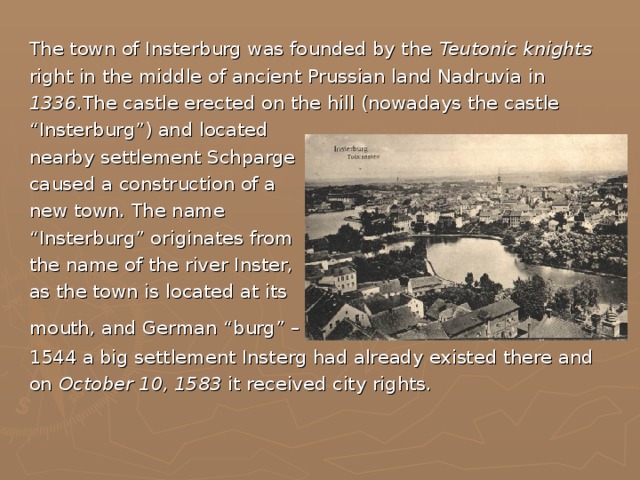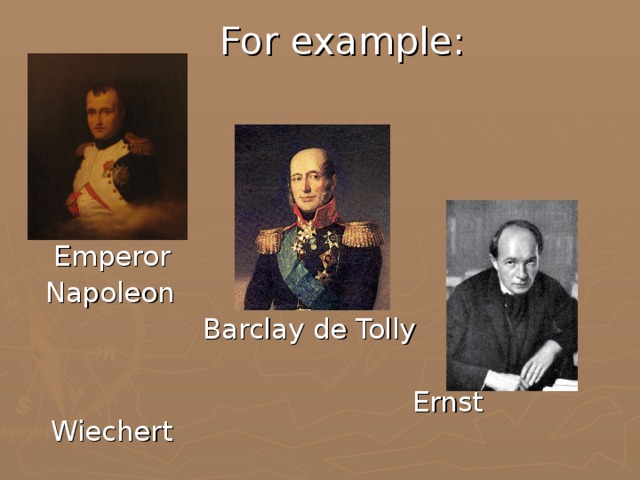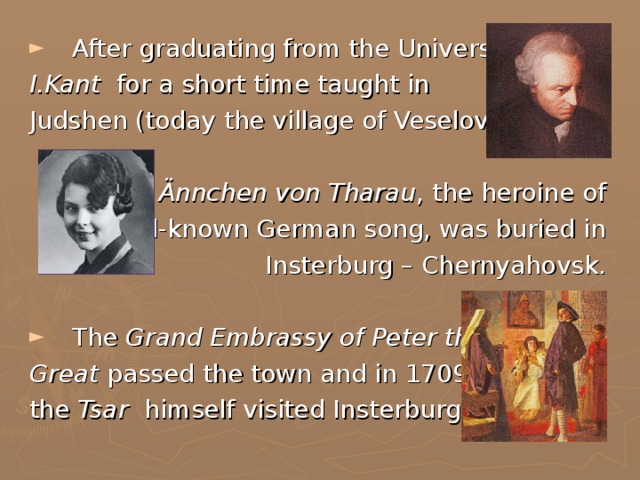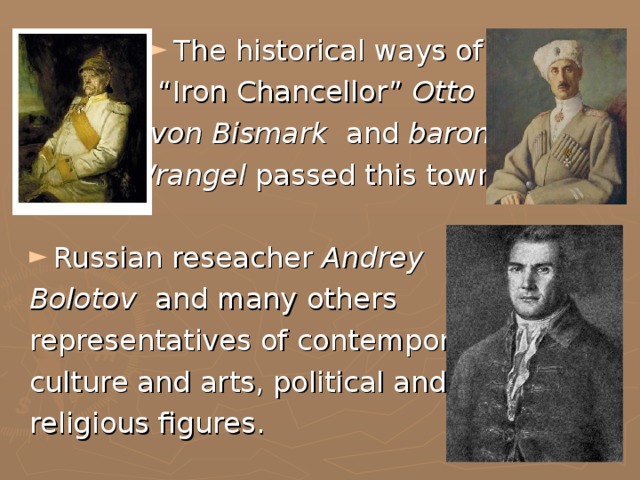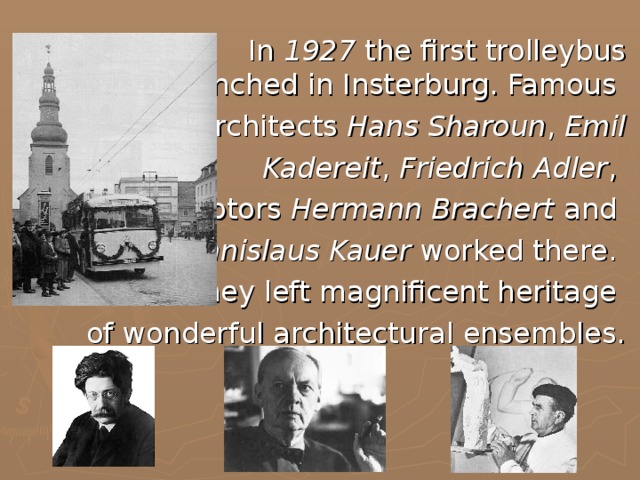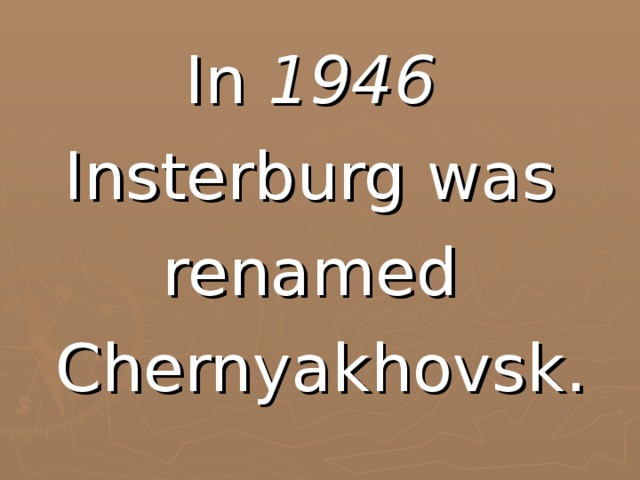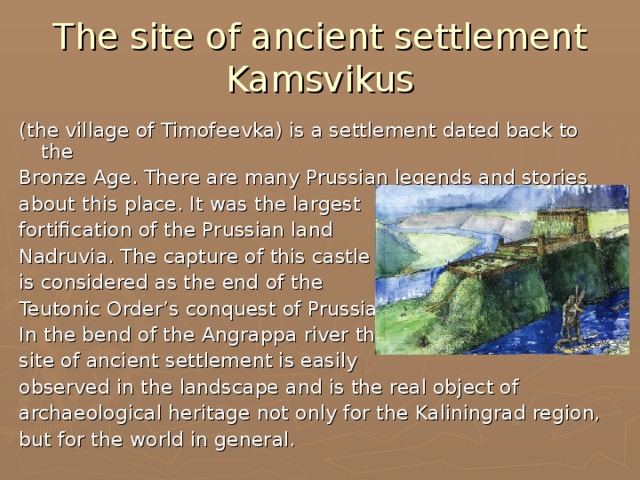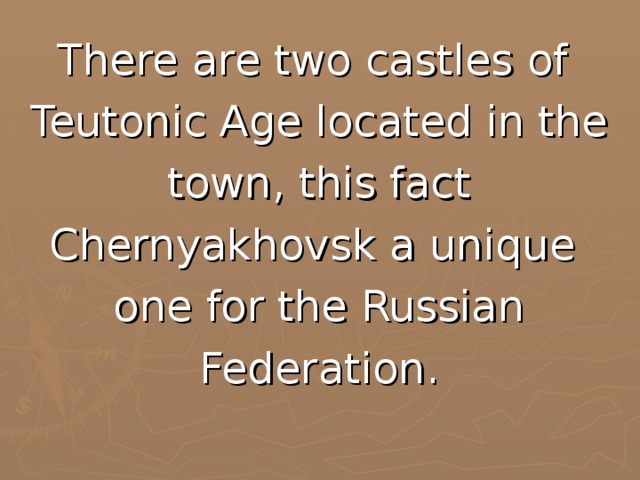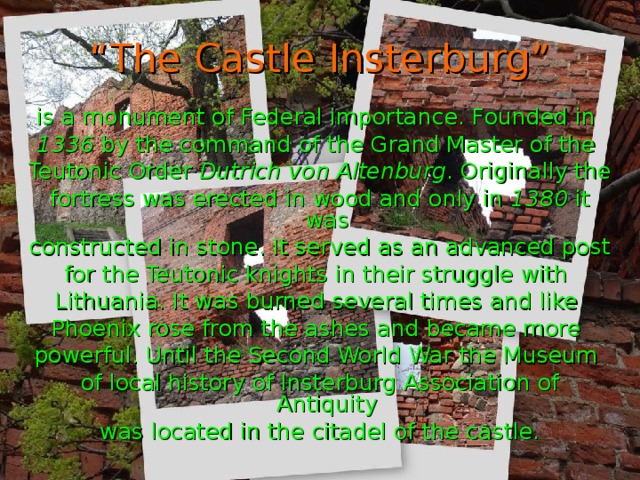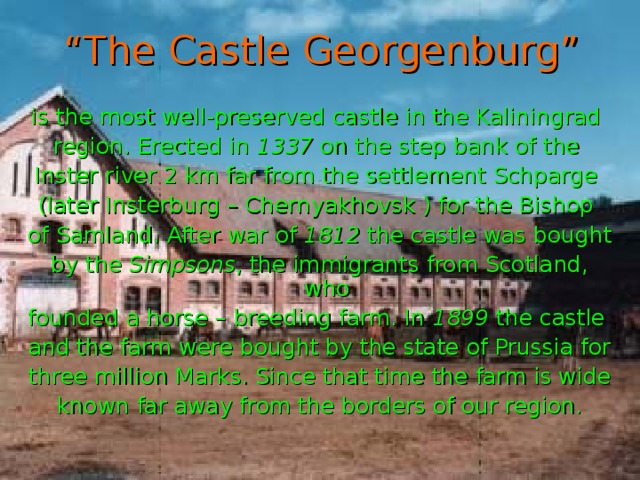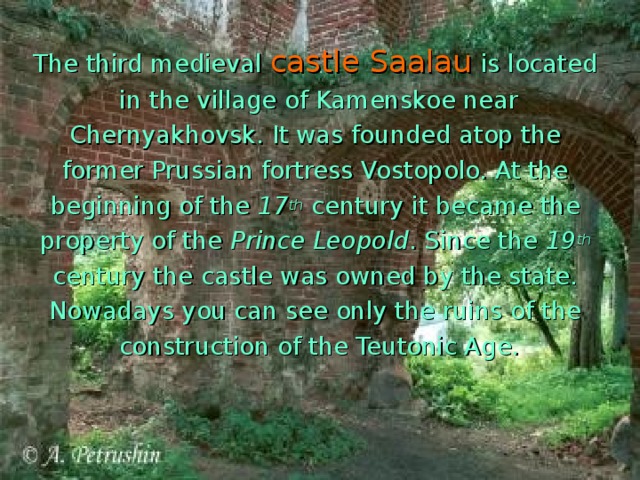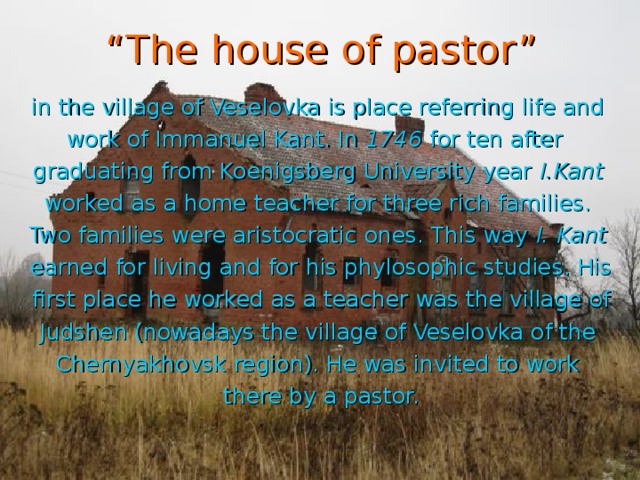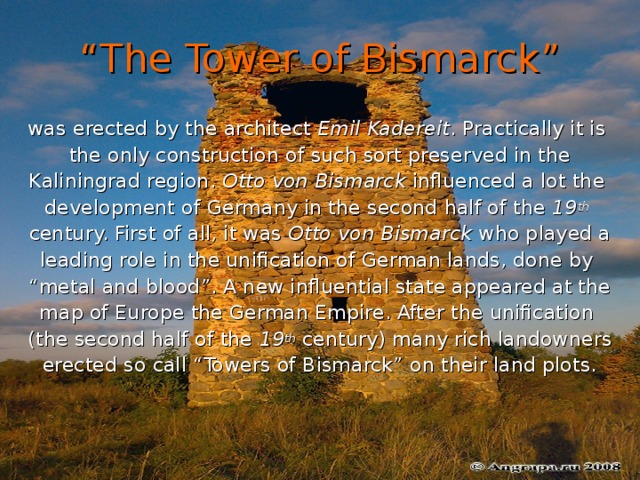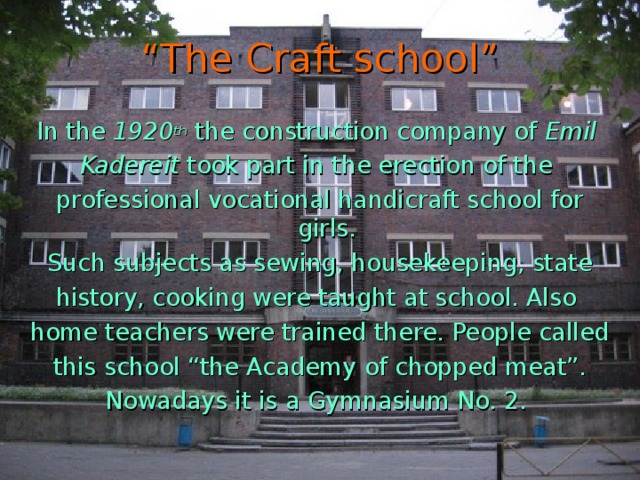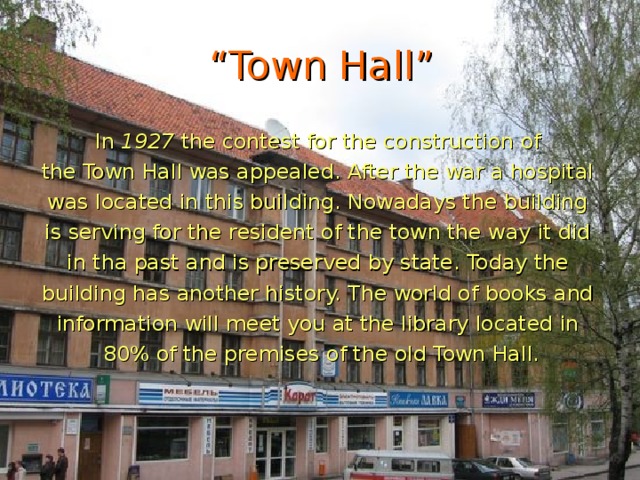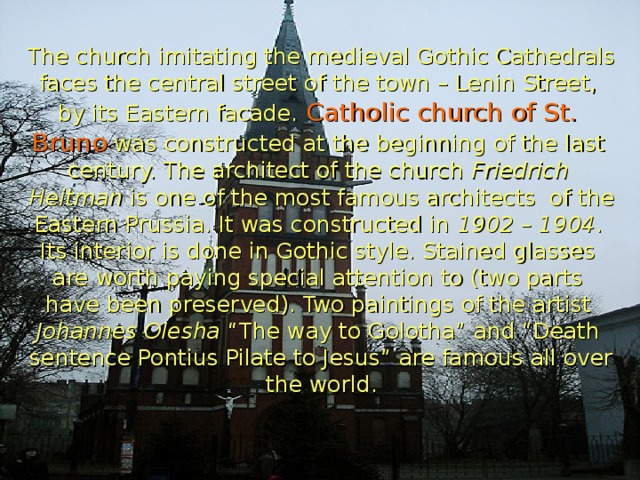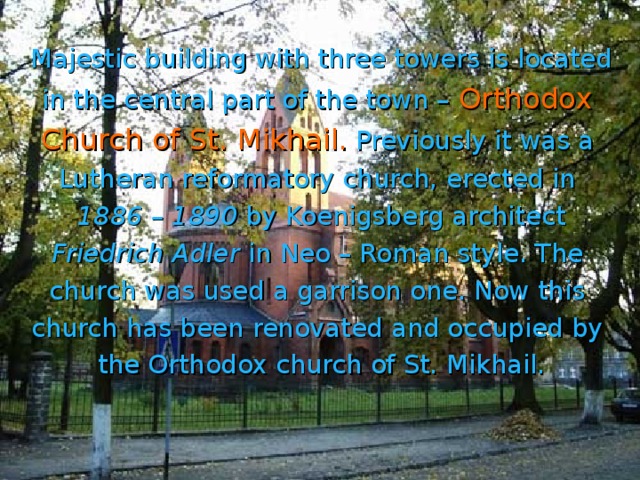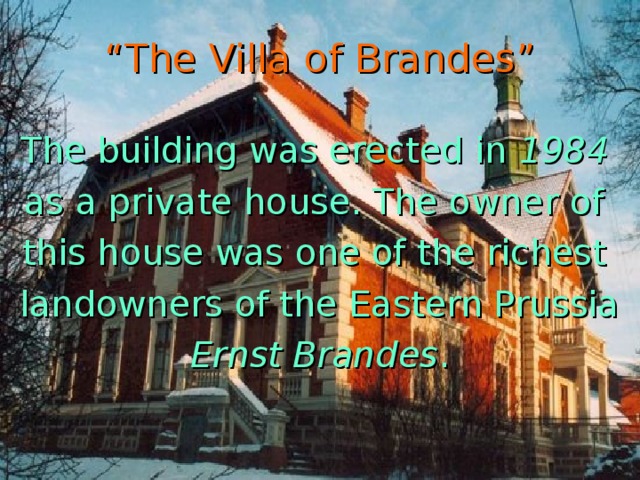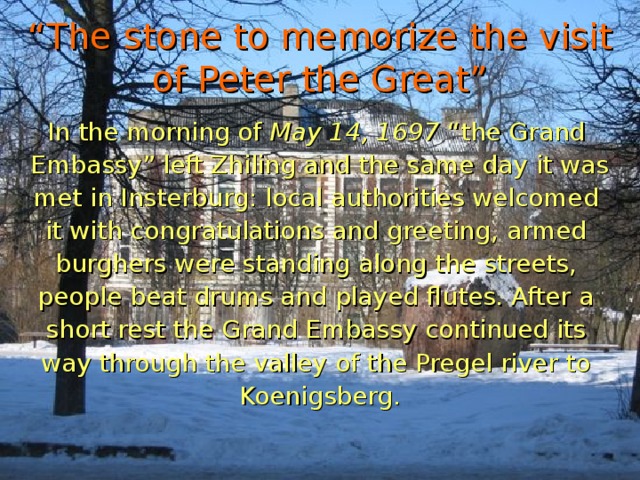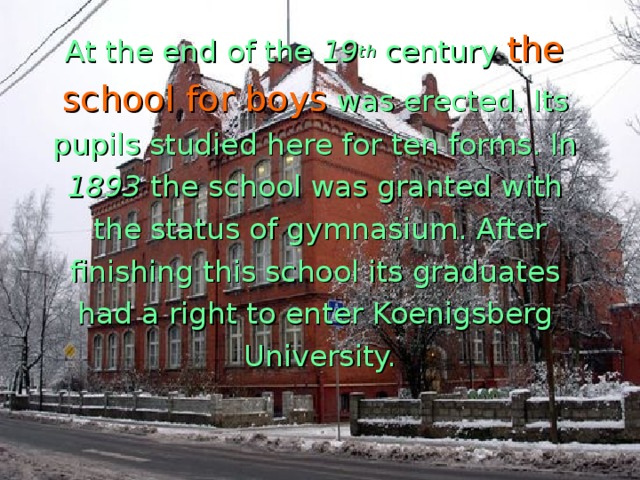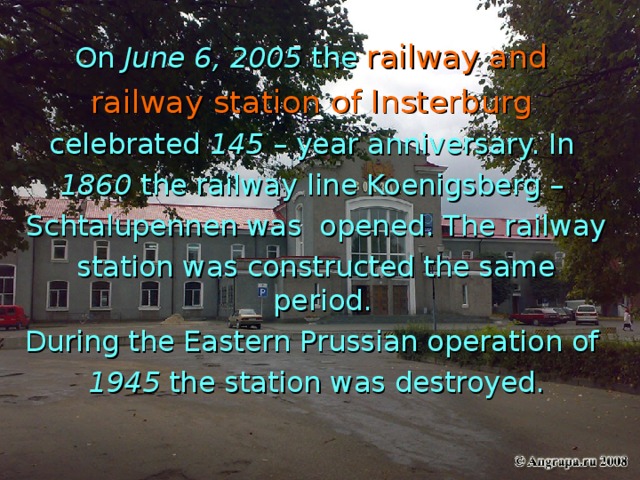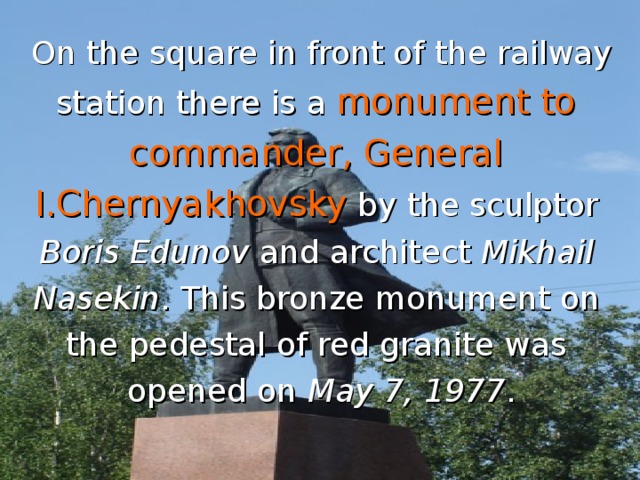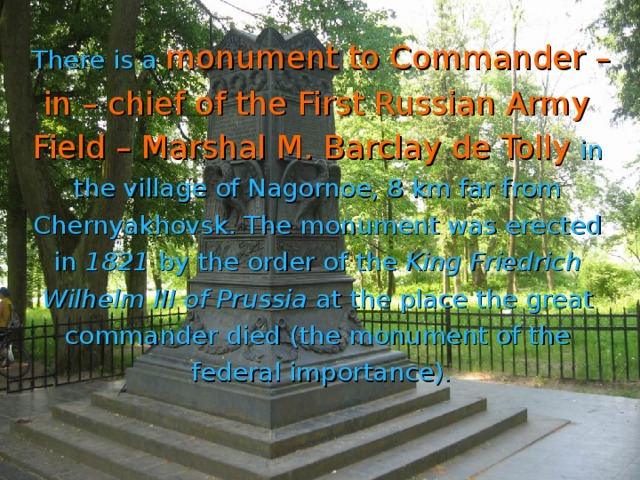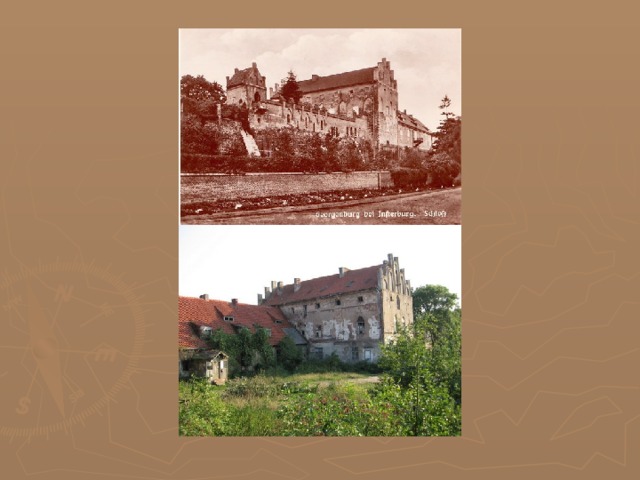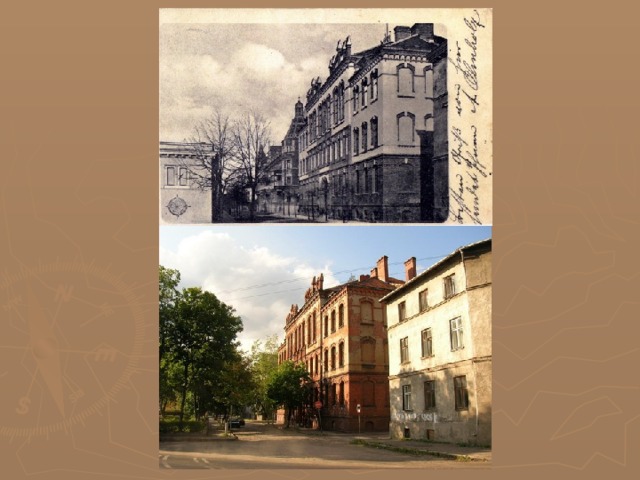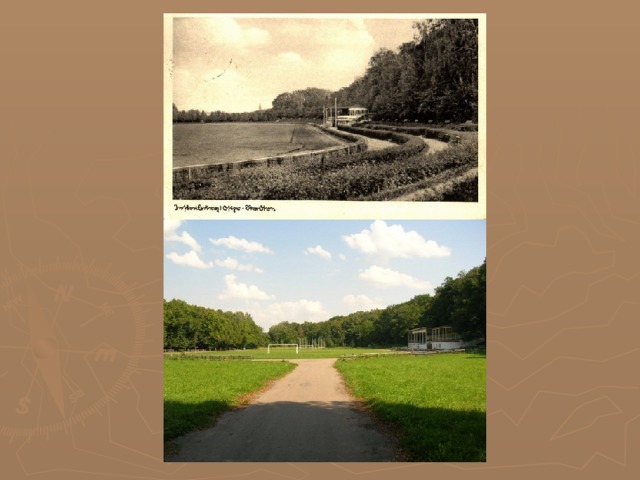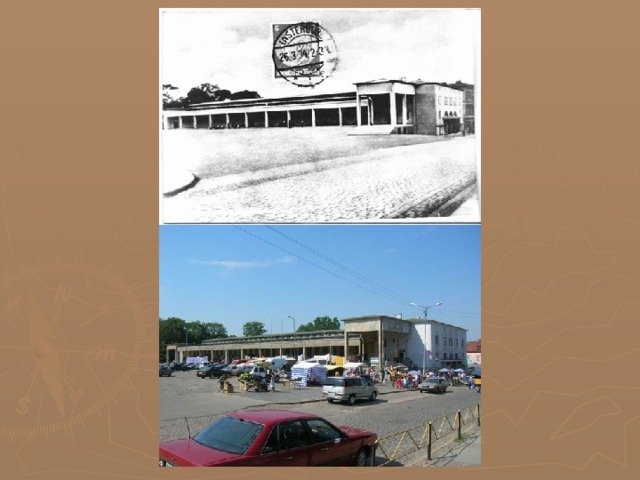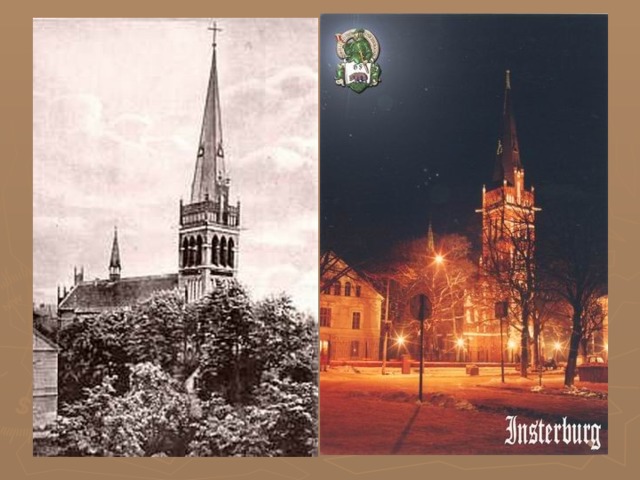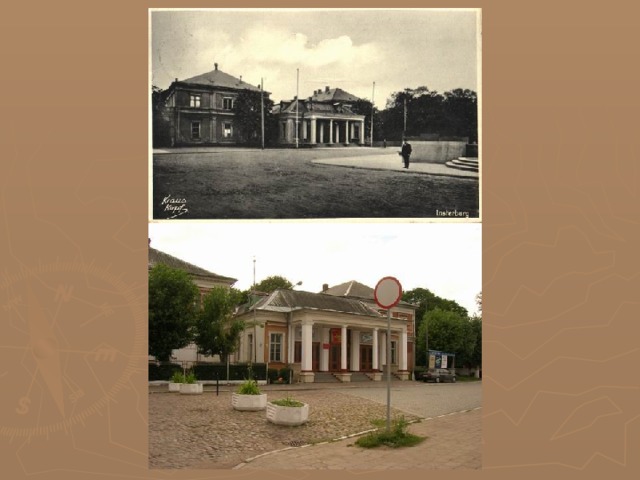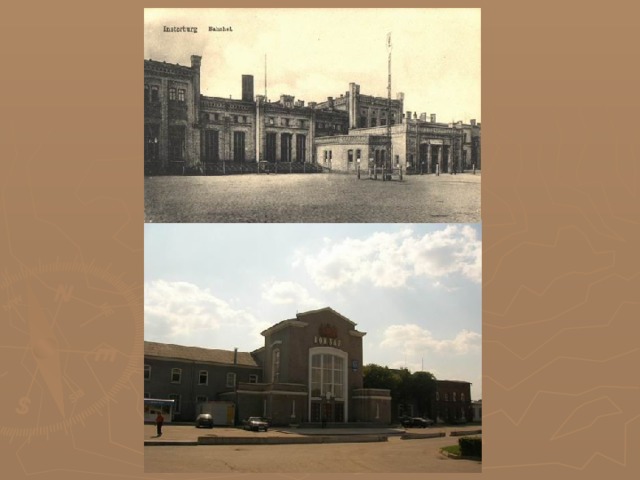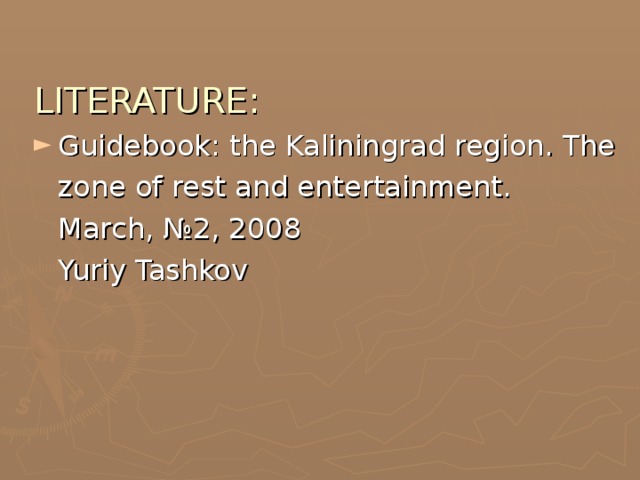CHERNYAKHOVSK ATTRACTS TOURISTS
Violetta Mushak
School 4
Chernyakhovsk
HISTORY
The town of Insterburg was founded by the Teutonic knights
right in the middle of ancient Prussian land Nadruvia in
1336 .The castle erected on the hill (nowadays the castle
“ Insterburg”) and located
nearby settlement Schparge
caused a construction of a
new town. The name
“ Insterburg” originates from
the name of the river Inster,
as the town is located at its
mouth, and German “burg” – “fortress, castle”. As early as in
1544 a big settlement Insterg had already existed there and
on October 10, 1583 it received city rights.
The history of Insterburg –
Chernyakhovsk is related to
many persons of Royal
families, commanders,
poets and writers, etc.
For example:
Emperor
Napoleon
Barclay de Tolly
Ernst Wiechert
After graduating from the University I.Kant for a short time taught in
Judshen (today the village of Veselovka).
Ännchen von Tharau , the heroine of well-known German song, was buried in
Insterburg – Chernyahovsk.
The Grand Embrassy of Peter the Great passed the town and in 1709
the Tsar himself visited Insterburg.
“ Iron Chancellor” Otto
von Bismark and baron
Wrangel passed this town.
Bolotov and many others
representatives of contemporary
culture and arts, political and
religious figures.
In 1927 the first trolleybus was launched in Insterburg. Famous
architects Hans Sharoun , Emil
Kadereit , Friedrich Adler ,
sculptors Hermann Brachert and
Stanislaus Kauer worked there.
They left magnificent heritage
of wonderful architectural ensembles.
In 1946
Insterburg was
renamed
Chernyakhovsk.
The site of ancient settlement Kamsvikus
(the village of Timofeevka) is a settlement dated back to the
Bronze Age. There are many Prussian legends and stories
about this place. It was the largest
fortification of the Prussian land
Nadruvia. The capture of this castle
is considered as the end of the
Teutonic Order’s conquest of Prussia.
In the bend of the Angrappa river the
site of ancient settlement is easily
observed in the landscape and is the real object of
archaeological heritage not only for the Kaliningrad region,
but for the world in general.
There are two castles of
Teutonic Age located in the
town, this fact
Chernyakhovsk a unique
one for the Russian
Federation.
“ The Castle Insterburg”
is a monument of Federal importance. Founded in
1336 by the command of the Grand Master of the
Teutonic Order Dutrich von Altenburg . Originally the
fortress was erected in wood and only in 1380 it was
constructed in stone. It served as an advanced post
for the Teutonic knights in their struggle with
Lithuania. It was burned several times and like
Phoenix rose from the ashes and became more
powerful. Until the Second World War the Museum
of local history of Insterburg Association of Antiquity
was located in the citadel of the castle.
“ The Castle Georgenburg”
is the most well-preserved castle in the Kaliningrad
region. Erected in 1337 on the step bank of the
Inster river 2 km far from the settlement Schparge
(later Insterburg – Chernyakhovsk ) for the Bishop
of Samland. After war of 1812 the castle was bought
by the Simpsons , the immigrants from Scotland, who
founded a horse – breeding farm. In 1899 the castle
and the farm were bought by the state of Prussia for
three million Marks. Since that time the farm is wide
known far away from the borders of our region.
The third medieval castle Saalau is located
in the village of Kamenskoe near
Chernyakhovsk. It was founded atop the
former Prussian fortress Vostopolo. At the
beginning of the 17 th century it became the
property of the Prince Leopold . Since the 19 th
century the castle was owned by the state.
Nowadays you can see only the ruins of the
construction of the Teutonic Age.
“ The house of pastor”
in the village of Veselovka is place referring life and
work of Immanuel Kant. In 1746 for ten after
graduating from Koenigsberg University year I.Kant
worked as a home teacher for three rich families.
Two families were aristocratic ones. This way I. Kant
earned for living and for his phylosophic studies. His
first place he worked as a teacher was the village of
Judshen (nowadays the village of Veselovka of the
Chernyakhovsk region). He was invited to work
there by a pastor.
“ The Tower of Bismarck”
was erected by the architect Emil Kadereit . Practically it is
the only construction of such sort preserved in the
Kaliningrad region. Otto von Bismarck influenced a lot the
development of Germany in the second half of the 19 th
century. First of all, it was Otto von Bismarck who played a
leading role in the unification of German lands, done by
“ metal and blood”. A new influential state appeared at the
map of Europe the German Empire. After the unification
(the second half of the 19 th century) many rich landowners
erected so call “Towers of Bismarck” on their land plots.
“ The Craft school”
In the 1920 th the construction company of Emil
Kadereit took part in the erection of the
professional vocational handicraft school for girls.
Such subjects as sewing, housekeeping, state
history, cooking were taught at school. Also
home teachers were trained there. People called
this school “the Academy of chopped meat”.
Nowadays it is a Gymnasium No. 2.
“ Town Hall”
In 1927 the contest for the construction of
the Town Hall was appealed. After the war a hospital
was located in this building. Nowadays the building
is serving for the resident of the town the way it did
in tha past and is preserved by state. Today the
building has another history. The world of books and
information will meet you at the library located in
80 % of the premises of the old Town Hall.
The church imitating the medieval Gothic Cathedrals
faces the central street of the town – Lenin Street,
by its Eastern facade. Catholic church of St.
Bruno was constructed at the beginning of the last
century. The architect of the church Friedrich
Heitman is one of the most famous architects of the
Eastern Prussia. It was constructed in 1902 – 1904 .
Its interior is done in Gothic style. Stained glasses
are worth paying special attention to (two parts
have been preserved). Two paintings of the artist
Johannes Olesha “The way to Golotha” and “Death
sentence Pontius Pilate to Jesus” are famous all over
the world.
Majestic building with three towers is located
in the central part of the town – Orthodox
Church of St. Mikhail . Previously it was a
Lutheran reformatory church, erected in
1886 – 1890 by Koenigsberg architect
Friedrich Adler in Neo – Roman style. The
church was used a garrison one. Now this
church has been renovated and occupied by
the Orthodox church of St. Mikhail.
“ The Villa of Brandes”
The building was erected in 1984
as a private house. The owner of
this house was one of the richest
landowners of the Eastern Prussia
Ernst Brandes .
“ The stone to memorize the visit of Peter the Great”
In the morning of May 14, 1697 “the Grand
Embassy” left Zhiling and the same day it was
met in Insterburg: local authorities welcomed
it with congratulations and greeting, armed
burghers were standing along the streets,
people beat drums and played flutes. After a
short rest the Grand Embassy continued its
way through the valley of the Pregel river to
Koenigsberg.
At the end of the 19 th century the
school for boys was erected. Its
pupils studied here for ten forms. In
1893 the school was granted with
the status of gymnasium. After
finishing this school its graduates
had a right to enter Koenigsberg
University.
On June 6, 2005 the railway and
railway station of Insterburg
celebrated 145 – year anniversary. In
1860 the railway line Koenigsberg –
Schtalupennen was opened. The railway
station was constructed the same period.
During the Eastern Prussian operation of
1945 the station was destroyed.
On the square in front of the railway
station there is a monument to
commander, General
I.Chernyakhovsky by the sculptor
Boris Edunov and architect Mikhail
Nasekin . This bronze monument on
the pedestal of red granite was
opened on May 7, 1977 .
There is a monument to Commander –
in – chief of the First Russian Army
Field – Marshal M. Barclay de Tolly in
the village of Nagornoe, 8 km far from
Chernyakhovsk. The monument was erected
in 1821 by the order of the King Friedrich
Wilhelm III of Prussia at the place the great
commander died (the monument of the
federal importance).
OLD AND NEW BUILDINGS
LITERATURE:
Guidebook: the Kaliningrad region. The zone of rest and entertainment.
March, № 2, 2008
Yuriy Tashkov


